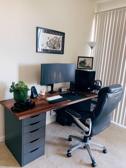
Review on Rechargeable Digital Noise Cancelling Hearing Aid BLJ-109 - Banglijian (1 Unit) by Richard Koh

5 star / Great amplifiers / Buttons too difficult for my 94 yr old dad / Advice for you
I spent many hours researching hearing aids and amplifiers. I eventually learned that all hearing aids are sold only through certified hearing specialists and it seems hearing aids cost a minimum of $1,500 for each hearing aid, typically $2,000-$3,000 for each hearing aid plus the cost of hearing tests and fitting. The difference is that hearing aids have highly sophisticated software. The specialist programs each hearing aid to amplify only the frequencies the person has difficulty hearing (usually higher frequencies). Hearing aids sometimes need to be adjusted to improve hearing which requires one or more office visits and possibly new testing. Amplifiers are a cheaper solution in that they simply amplify all frequencies. However, amplifiers like this one with noise cancelling don't amplify lower frequencies as much and reduce some background noise. You choose one of the 3 modes based on the level of background noise there is: quiet room, moderate (restaurant), loud (traffic).For this amplifier, many reviewers here say they are equally as effective or slightly more or slightly less effective than vastly more expensive hearing aids they've used. So I suggest for anyone with any level of hearing loss, start by buying an amplifier, use it 4-8 hours a day ever day for at least 3 wks to get used to it. If it doesn't work out, return it, try another amplifier, perhaps a different style amplifier, if it doesn't work out, try hearing aids.I found Banglijian to be the best amplifier on Revain based on reviews, features, 90 day return policy, ease of use (in theory), ability to customize, excellent customer service (according to reviewers) and reasonable price.I bought two of these for my 94 yr old dad. I estimate his level of hearing loss is moderate: (1) he can only hear me if I am 3 ft away speaking 20% louder than normal, (2) with my normal hearing, I set the TV volume at 5, dad needs it at level 15, (3) he cannot hear people talking to him when there is background noise like in a store or restaurant.I set up these amplifiers for him. He selected the dome size that had a snug fit. I cut the large tubes to fit. He and I were surprised that he only needed to set the volume at level 2 or 3 out of 6 vol levels, so plenty of extra capacity if his hearing loss worsens.The first week, no problems, only brief squealing now and then. Second and third week, frequent squealing. I told him the main reason is a lose fitting dome. So he tried some of the larger domes, found a larger one that had a more snug fit. I installed the larger domes, no more squealing. I think the domes will soften, wear down with use and have a looser fit, so they may need to be replaced with a larger dome.Also I found that when handling the amplifiers, squealing usually happens then when you stop handling it, squealing stops. In that case, the squealing is caused by your hand directing sound exiting the dome back into the microphone causing feedback. I believe the microphone is behind the on/off switch. There is no microphone hole. The on/off switch is the only place on the device that has an opening. To avoid squealing when handling: keep amplifiers off, put them on, then turn them on. When taking them off, turn them off first, then take them off.Dad complained about (1) loud background noise like the house A/C and traffic noise when driving, (2) the fact that his own voice was reverberating loudly in his head and (3) the buttons were "complicated" and hard to adjust with the amplifiers on his ears. I told him, from what I've seen, all over-the-ear amplifiers and hearing aids are basically the same regarding all 3 points. I told him the key is to wear the amplifiers 4-8 hours a day every day because it will take several weeks to get used to these changes. He only wore them when he needed them, a few hours now and then. So he never got used to the changes.Also he is extremely picky and if anything is not very easy to do, he complains. So his complaint that the controls are complicated is partly bec he refused to try to learn how to use them, got frustrated and stopped trying and partly bec he actually did get confused about the buttons. He couldn't remember which button had which function. He also has large fingers which made it difficult for him to control the small buttons. So you or your elderly relative may have these problems with the buttons. The only way to know is to buy them, try them for several weeks and see how it goes. If the buttons are difficult to use, look for a model with a simpler design.After 3 weeks, he was frustrated due to the 3 complaints above and asked me to return them which I did. So now he's shopping for hearing aids. My guess is he will have the same complaints no matter what over the ear device he buys since they all have similar designs.I still recommend these amplifiers bec they work really well.Dad just didn't put in the effort to learn how to use them and get used to them.The key is using the amplifiers 4-8 hours every day to get used to the changes and mentally / emotionally accept that listening with devices is different and has some aspects of discomfort which is the price to pay to have better hearing, so be realistic.I also suggest:1) Give the person a large drawing of the amplifier showing the function of each button.2) On the drawing, write the mode # and volume level # for right amplifier and left amplifier. Some people need a different volume level for each ear.3) Make a label that says "Right" and a label that says "Left" and tape each label on the side of the amplifier that faces the head so they can easily select the right amplifier for each ear.4) Make a small label with your cell phone number and tape that to the curved (bottom) of each amplifier.5) Make labels with your name and cell phone number and put one label in each travel case. Both amplifiers can fit in one case. I suggest the labels with phone numbers anticipating the person will leave the amplifiers somewhere so hopefully someone will find them and call you.6) Make two labels that say Banglijian Amplifiers and tape one label on each charger (or on the wire) since they have no name.7) Set up a power strip with 4-6 outlets and 2 USB ports on a table (you may need to use an extension cord) and plug in all chargers for all devices to that power strip for easy access. Tape a label on each charger (or on the wire) to identify the corresponding device.
- RECHARGABLE FEATURE: Our hearing aid runs with high quality lithium battery, which saves your trouble to buy button batteries frequently. It can be used for 45-60 hours after charging 2 hours. It can be charged via USB cable, you are able to charge anytime and anywhere you want.
- The rechargeable feature may not be as durable as traditional battery-powered hearing aids
New products
Comments (0)
Similar reviews
Top products in 💊 Respiratory Aids & Accessories

MegaWise EMS TENS Unit: 48 Modes, 10 Premium Pads For Back Pain Relief Therapy - Dual Channel, Home Use With Gift Options

52 Review
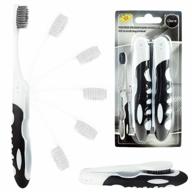
Pack Of 2 Lingito Travel Toothbrushes With Folding Feature, Soft Bristles - Perfect For On-The-Go Oral Care With Charcoal Infused Bristles

36 Review
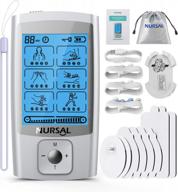
NURSAL 24-Mode TENS Unit: Revolutionary Pain Relief And Muscle Stimulator With Rechargeable Functionality And 8 Pads For Maximum Effectiveness!

36 Review
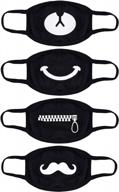
Aniwon Mouth Mask 4 Pack For Men And Women - Kpop Style EXO Anti-Dust Face Masks Made Of Cotton (Combination 1)

37 Review
Another interesting products
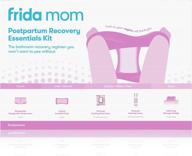
Frida Mom Postpartum Recovery Essentials Kit: Disposable Underwear, Ice Maxi Absorbency Pads, Cooling Witch Hazel Medicated Pad Liners & Perineal Healing Foam.

28 Review
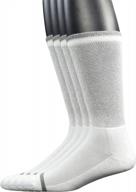
Yomandamor Men'S 4 Pairs Bamboo Diabetic Crew Socks With Seamless Toe And Cushion Sole

32 Review

Flexible Tip Enema Bulb For Effective Cleansing With Cleanstream

24 Review
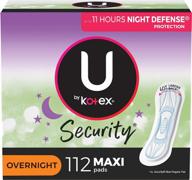
U By Kotex Security Maxi Overnight Unscented Feminine Pads, 112 Count (4 Packs Of 28) - Packaging May Vary

17 Review

